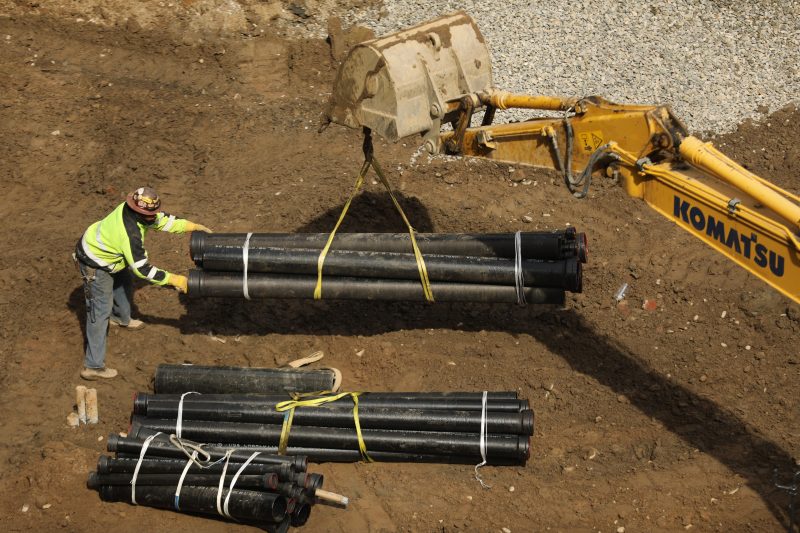US job growth resumes in March, letting Trump breathe easier
New construction at a building site in New York City in March 2019 — US job creation came back to life in March, with a hiring surge in healthcare, bars and restaurants, while unemployment held steady at 3.8 percent (SPENCER PLATT)
Washington (AFP) – US job creation came back to life in March, possibly assuaging recession fears and allowing Donald Trump a sigh of relief.
Government data released Friday showed a hiring surge in healthcare, bars and restaurants, while unemployment held steady and worker wages continued to climb.
The return to healthy job creation at the close of the third quarter followed wild results at the start of the year, including an anemic February when employers added just 33,000 net new positions, the slowest in 17 months.
The world’s largest economy added 196,000 net new positions for March, well above expectations, while the jobless rate held steady at 3.8 percent, according to the Labor Department.
The broad consensus among economists is that the US economy is slowing as the boost from recent tax cuts and fiscal stimulus fades. But President Trump’s administration has forecast that 2019 will be another banner year for growth.
Shortly after the numbers were released, Trump delighted in the news.
“Our country is doing unbelievably well,” he said.
Average hourly wages rose four cents for the month, putting them up 3.2 percent over March of last year, more than twice the pace of consumer inflation over the same period — but down from February’s 3.4 percent, which had been the highest in a decade but which may have been distorted by weather effects.
This gives workers purchasing power and suggests they will continue to spend despite surprising recent dips in retail sales and consumption.
– A dark spot –
Ian Shepherdson of Pantheon Macroeconomics said the numbers were good but “not a game changer.”
“Normal service is restored, after a couple of wild swings,” he wrote in a note to clients.
A dark spot, however, was hiring among manufacturers, a sector hard-hit by Trump’s trade war with China. Automakers shed 6,300 jobs. Retailers also gave up nearly 12,000 workers. This was offset by gains in architecture, engineering and management services.
The labor force also shrank as more than 220,000 people stopped looking for work, driving the participation rate down two tenths of a percentage point to 63 percent — a level around which it has stubbornly fluctuated for much of the past two years.
After steadily tightening interest rates last year, much to Trump’s chagrin, the Federal Reserve now forecasts it will not raise rates at all this year, taking note of slowing economic activity in the United States and globally.
However, economists say even a slower pace of growth is enough to continue driving unemployment downward at a time when employers already complain they are desperate to find capable workers.
As wages rise as a result of falling unemployment, inflation may soon follow, leaving central bankers little choice but to continue pushing their benchmark lending rates higher.
Yet, in his remarks to reporters on Friday, Trump called on the Fed to cut interest rates and resume its post-financial crisis bond-buying stimulus program, saying inflation was negligible.
“The data don’t give the Fed reason to start tightening again soon but they don’t support the case for easing either,” Jim O’Sullivan of High Frequency Economics wrote in an analytical note on the March employment numbers.
Wall Street forged a little higher after the news, with the benchmark Dow Jones Industrial Average up 0.1 percent at 1430 GMT.
Disclaimer: Validity of the above story is for 7 Days from original date of publishing. Source: AFP.


